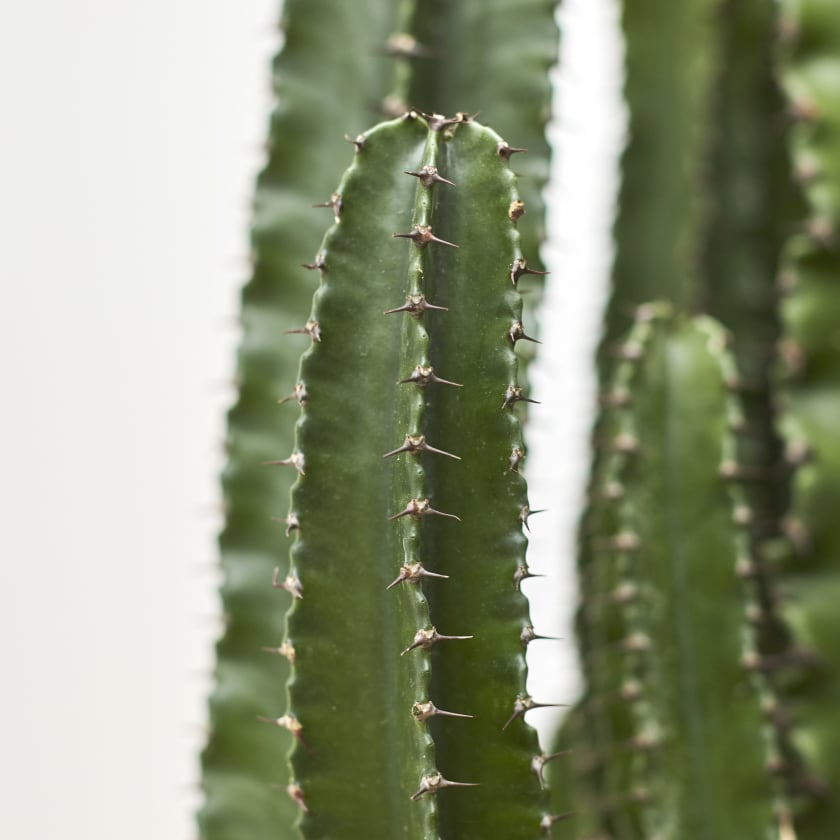
Purple wood splurge ( Euphorbia amygdaloides 'Purpurea') is a popular cultivar. It is suitable for growing in zones 6 to 8. It can grow to a height of 15 feet, but is typically maintained as a 1 to 2 foot houseplant. Euphorbia antiquorum is one of the largest armed tree Euphorbias, cactus-like in appearance with a rugged elegance growing up to a height of 5 7 m, branched and branched to form a loosely rounded crown, it has been known to attain gigantic proportions if left undisturbed, but usually shrub-like. This plant can also be a good houseplant under the right conditions. Wood spurge ( Euphorbia amygdaloides) is a bushy evergreen that grows 18 to 24 inches tall with yellow flowers that appear in mid to late spring. Euphorbia lactea, or Mottled spurge, is a deciduous, spiny, usually leafless, cactus-like succulent shrub or small tree. The euphorbia lactea is a tropical plant that looks like a cactus, creating a neat landscaping effect around your home.It makes a nice edging plant and is often used as a ground cover in zones 5 to 9. Wood spurge is an evergreen variety that blooms in yellow flowers from mid to late spring and grows up to 1-2 feet tall. It grows six to ten inches tall and in the spring produces star-shaped yellow bracts. Donkey Tail spurge, Myrtle spurge ( Euphorbia myrsinites) is an evergreen succulent with creeping, spiraled blue-green foliage.It is usually grown as a houseplant but can be grown outdoors in zones 10 and 11. Baseball euphorbia ( Euphorbia obesa) is a small succulent with a round, ball-shaped stem that gradually becomes cylindrical as the plant ages.See more ideas about euphorbia, cacti and succulents, cactus and succulents. Different cultivars offer red, pink, or yellow flowers that bloom repeatedly. Klara Apostolovskas board Euphorbia, followed by 1018 people on Pinterest. It can also be grown as a houseplant but typically won't reach its maximum size indoors. Euphorbia tirucalli (Pencil Cactus or Pencil Tree) This is the most commonly grown of all the Stick Euphorbias and for good reason. At maturity, the Euphorbia cactus reaches up to 6 ft. Growing outdoors, the African milk tree has dense growth and grows into a bush-like spiky plantwhich is also called the African milk bush. Crown of thorns ( Euphorbia milii) is a bushy evergreen plant that can grow up to six feet tall outdoors in zones 9 to 11. The Euphorbia cactus is a perennial, evergreen succulent native to Central Africa.It is grown in USDA hardiness zones 4 to 8. Cushion spurge ( Euphorbia polychroma) is a clumping perennial growing 12 to 18 inches high with yellow flower bracts that appear in spring.It will form clusters up to 24 inches (60cm) in diameter. This plant is a spiny succulent shrub that branches at the base. They are characterized by dark green, four-lobed stems and a columnar growth structure that branches as they matureleading to the common nicknames candelabra cactus and African candelabra tree. The Spruce Home Improvement Review Board Euphorbia ferox is an ornamental, perennial flowering plant in the family Euphorbiaceae, commonly known as Spurge family, native from South Africa. Euphorbia ingens ( Euphorbia ingens) are large, tree-like succulents that are beloved for their stately appearance and low-maintenance nature.Substitution may only be prevented by contacting The Cactus King.Īvailability and prices are subject to change. The moment payment via check, cash or money order is received/cleared, however, a client’s plants are reserved. If the particular desired plant(s) sell out, substitution occurs. Timely payment is critical to avoid substitution. The Cactus King reserves the right to substitute your plant(s) as availability dictates. Loss of soil will not harm your plant(s).

The best time of the day to water your Euphorbia s in the warm season is evening. Give them just enough water to prevent wilting. From spring to fall, water when the top inch (2.5 cm) of soil feels dry. As such, if your plant is potted, dirt may fall out during the journey. Some non-columnar euphorbias also can be grown indoors, like Euphorbia leucodendron and Euphorbia tirucalli ‘Sticks on Fire’ (sometimes called pencil cactus), which both have a beautiful forking shape that almost seems to mimic aquatic flora. Succulent Euphorbia s can survive drought, but that does not mean that they need it. The Cactus King’s soil mix is very light to stop moisture from lingering too long and causing illnesses such as root rot. Our plants are packaged with care, utilizing varying protective wrapping (depending on the cactus or succulent), such as newspaper and/or Styrofoam beads within a cardboard box. They may be a cutting, division or non-rooting plant. The majority of our cacti and succulents are shipped bare root.


 0 kommentar(er)
0 kommentar(er)
